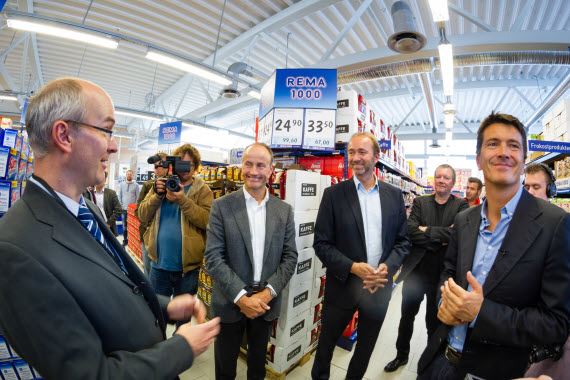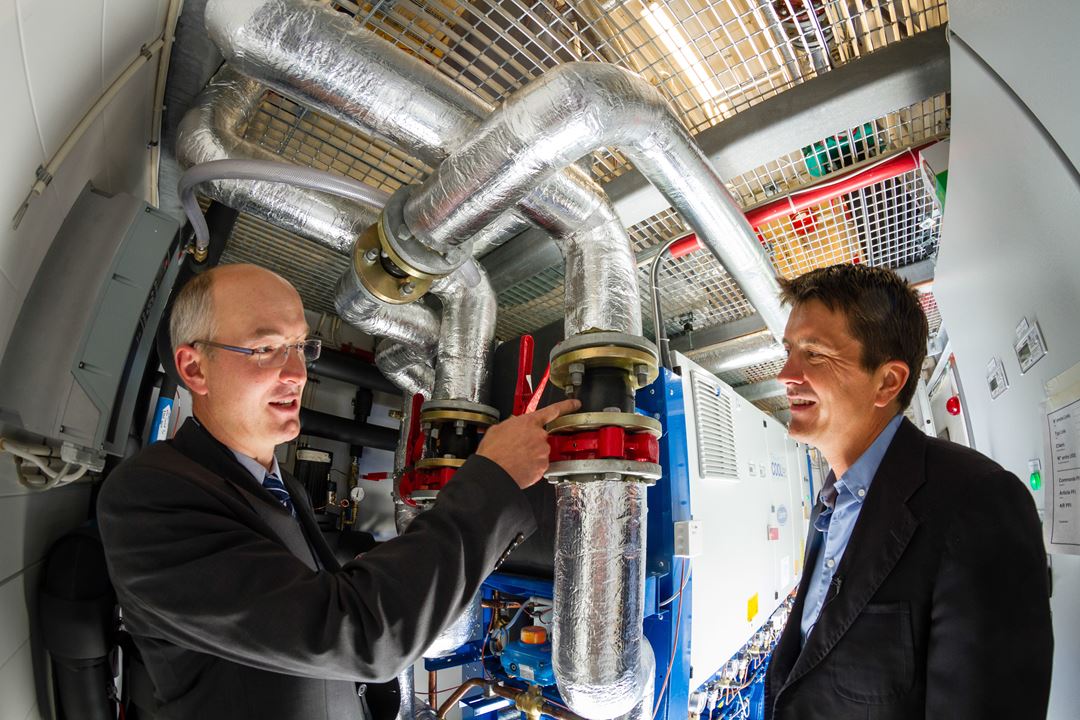“Today we have to dump some of the surplus heat above the roof of the building. If there had been schools or kindergartens in the neighbourhood which could have used this heat, the real energy saving would have been even more than the 30 per cent we believe to be realistic for these sales premises,” says research scientist Armin Hafner.
As SINTEF Energy Research’s representative he has been heavily involved in the design of the recently completed grocery shop in Kroppanmarka in Trondheim.
A living laboratory
According to Hafner this shop will be one of the most effective energy-saving grocery shops in the whole of Europe.
The key to the energy savings is:
- the use of daylight
- the technologies used in the ventilation system and refrigeration unit,
- the handling of the heat exchange between these systems
- the tuning of the overall control strategy
- the monitoring of the energy use of various sub systems
In addition to supplying its customers with food and other necessities, the shop will be a living laboratory, with advanced measurement devices for all sub systems.
Mass production the next step
None of the companies involved in the development and installation of the systems will deny that this pilot shop is more expensive to build and equip than ordinary grocery stores.
However, energy consumption will now be measured scientifically to create the basis for mass produced – and therefore cheaper – solutions. The aim is that equipment and system suppliers will then make the results available to other shops, in Norway and abroad.
The energy-saving systems have been developed as part of a specialist project called “CREATIV”, funded by the Research Council of Norway, in which SINTEF – the largest independent research organisation in Scandinavia – is the research coordinator, and supermarket chain REMA1000 and the supplier companies Danfoss and Systemair are participating as commercial partners.
(The article continues after the photograph)

|
| Trond Giske, the Norwegian Minister for Trade and Industry, cannot remember having opened a grocery shop before. This is not surprising, as it’s not every day a grocery store becomes an environmental research project. Here we see him (third from left) listening to SINTEF’s Armin Hafner (left), Enova’s Managing Director Nils Kr. Nakstad and Rema’s Ole Robert Reitan. Photo: SINTEF / Thor Nielsen |
Smart use of daylight and waste heat
According to Armin Hafner of SINTEF, the shop’s low energy requirement results from two efficient energy consumption strategies:
- Lighting control. An automatic control system switches off fluorescent ceiling lights in sequences according to the amount of incoming daylight in the dedicated lighting zones of the shop. The outer walls contain Aerogel, a translucent insulation material which distributes daylight effectively to the interior of the shop. Using this material has also eliminated the need for expensive sun shading systems.
- A fully integrated ventilation, cooling and heating system. Surplus heat from cooling installations is stored temporarily in accumulation tanks and the active concrete floor (floor heating). The ventilation system can require heat only from the accumulation tanks, as well as reject heat via energy wells into the ground. Heat is distributed into the shop area through both the ventilation system and the heated floors when required.
Four 170-metre deep energy wells have also been drilled outside the building. They can be applied as a heat sink to cool and dehumidify interior air in summer. The refrigeration unit can also reject heat into the ground, which results in low refrigerant return temperatures, i.e. high system efficiencies. During winter time, when internal cooling loads are short, the energy well can be applied as an additional heat source to support the heat pump operation. Direct electrical heating is an inefficient form of space heating and will not be used.
“Almost unique in the world”
Trade and Industry Minister Trond Giske listened as Hafner explained in some detail the finesses which he believes make the new shop one of the most environmentally friendly in the world:
- The refrigerants, i.e. working fluids – the substances which transport heat out of the refrigerated counters and cabinets – contain no hydrofluorocarbon compounds, which are powerful greenhouse gases. Only natural working fluids – CO2 and hydrocarbons (propane and butane) are applied all over the shop.
- The building contains a single thermal installation control system which regulates all heat flows and monitors the energy consumption. Thus there are no control conflicts between the different sub systems.
Everyday application of science
The Minister pointed out that it is unusual for a grocery shop to be made into an environmental research project.
“However, as we in government have clearly pointed out, if we are to succeed in tackling our environmental challenges, environmentally sound solutions have to become part of everyday life. Special large-scale concepts such as the CO2 capture project at Mongstad in Western Norway are not enough on their own. Important as these projects are, it is in people’s day-to-day lives that we can really make a difference,” said Giske.
The Minister made it clear that this in itself was a good reason to be present at the opening of what is, so far, an unusual shop.
By Svein Tønseth

